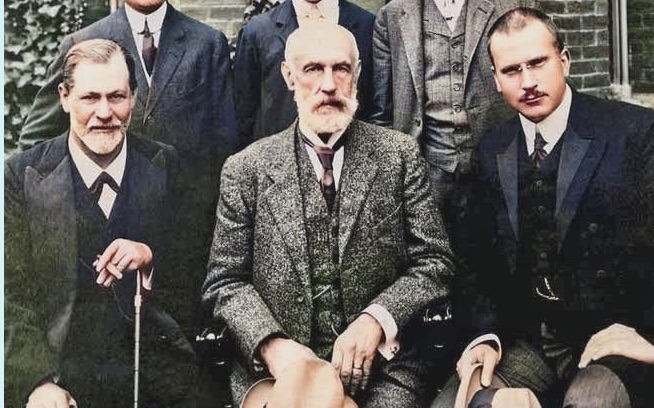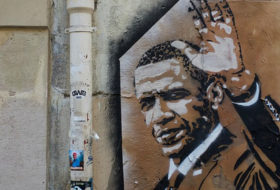Why did the friendship of Freud and Jung end in Bitterness?
To this day, there is a compelling fascination in reading the letters of Freud and Jung. One almost feels guilty like some peeping Tom invading the privacy of their thoughts.
Despite their famous feud, they started off as good friends. After all they were both psychoanalysts with a great deal in common.
So what led to the breakdown of their friendship and why did it eventually turn sour?
Many books have been written about the feud between these two men and their correspondence has been carefully scrutinised for all sorts of tell-tale signs.
No doubt the breakdown of their friendship had certain causes to which we will never be privy. But in addition to these, there was one glaring cause; the huge difference in their personalities.

Freud left. Jung right
A mere glance at their vastly contrasting handwritings is sufficient to show that they were poles apart in temperament. (See below)
The difference in their personalities was undoubtedly one of the most important factors that contributed to the final dissolution of their friendship.
Freud’s compact, heavily- pressured handwriting with its numerous restrictions shows that he was temperamentally volatile and subject to emotional torment, dark moods and impulsive outbursts.
It is hardly surprising that his handwriting also reflects signs of obsession.
For any theory to gain such universal recognition as did Freud’s, it had to be promoted with total obsession and Freud was nothing if not completely rooted to his theory of sexuality.
So immersed was he in this theory that every aspect of life had to be examined under the magnifying if not myopic lens of sexuality. All the books and articles that he ever wrote on religion, literature, or art set out to prove the validity of his theories.
Freud was a passionate and intense character who saw everything in shades of black and white and his bouts of frustration and anger were no doubt a force to be reckoned with. He was a turbulent character and his handwriting clearly mirrors his dark brooding quality.
There is a strong element of untamed inventiveness, of genius unconfined by established rules and a boundless creative energy exudes from every letter.
Freud’s handwriting also reveals that he was easily hurt. The high degree of tension, heavy pressure, irregularity, discordances and lack of rhythm all point to his moodiness.
His strong resentments and undying grudges are plain to see but interestingly we can also see how deeply he loved and how vigorously he hated.
Passion is the word best used to describe Freud’s handwriting with its ink-filled letters and many sweeping extensions. He showed a passion in his beliefs and a passion in his relationships. Small wonder that his philosophy evolved around sex.
Certainly, his courtship of his wife, Martha Bernays was ardent enough when in addressing a letter to her he started it with: “My sweet darling girl”. This was no luke-warm character.
Neither, years later, would he have been lukewarm in his friendship with the beautiful Lou Andreas-Salome, a notable seductress who ostensibly admired his intellect.
Jung had a very different Personality
While Freud was a temperamental man with powerful emotions that were difficult to control, Jung was a quiet and highly-disciplined introvert. And where Freud would always react with emotional involvement, Jung was cool and calculating.
Whereas Freud stayed with the earthy practicalities of sex and repression, Jung’s ideas tended to frequent the ethereal and lofty heights of symbolism and the esoteric meanings of myth.
The collective unconscious, the notion of archetypes and the very words extrovert and introvert, were all concepts in psychology that were put forward by Jung.
Jung was a man of intellectual honesty and courage and he could not be diverted from the course in which he truly believed.
Unfortunately, what he believed proved to be extremely controversial particularly for the times in which he lived and for the circles in which he moved.
In short, Jung had decided to investigate the strange secrets of the hidden world of the soul and for this he was to pay a heavy price.
Unlike today, where alternative thinking has become rather fashionable, in those days it was severely frowned upon. In the intellectual climate of the time, where realism and Darwinian ideas were valued above all else, Jung now found himself in dangerous waters.
Like Freud, he was a medical doctor with a fine reputation and he knew that by entering into shadowy areas – albeit with the idea of scientific investigation – he would lose credibility by his mere association with alternative or esoteric themes.
Nevertheless, Jung felt compelled to explore the enigmatic areas of the soul where no scientist had ventured before him. And so he studied extra-sensory perception, the tarot, ghosts, the I-ching and innumerable other obscure areas.
He travelled into the heart of Africa to study tribal society, and he visited the Pueblo Indians to discover their secrets. He knew the myths of every country and the folklore of every nation.
He investigated parapsychology and studied alchemy in great depth, maintaining that answers could be found anywhere and that therefore no area should be taboo.
His friends were vehement in advising him against his unorthodox direction while Freud took full advantage of the opportunity to heap scornful criticism on Jung’s broad shoulders.
But Jung thought that he would be untrue to his own ideals if he did not investigate – scientifically – the areas that gave humanity the most difficulty.
So he advanced stubbornly into the murky waters of the unknown against all advice, knowing full well that such an action would be irreversible and that his reputation would inevitably suffer the consequences.
Some suggested that he had lost himself in mystical ideas and that he was not completely mentally sound. It is possible that they were driven by malice but there is indeed evidence of compulsive thinking in his handwriting and it is more than likely that some of his esoteric ideas may have had an unlikely influence on him at some later stage in his life.
The Handwriting of Jung
Jung’s handwriting is deeply intellectual and shows that he was guided by careful logic. There is a wonderful fluidity of movement that indicates his facility in the use of words and thoughts and this is borne out by his voluminous writings.
He was a highly organized individual who showed meticulous attention to detail. The middle zone letters are of even size, the diacritics are carefully placed and even the full stop after his signature is round and perfect.
Jung was a man of modesty, despite the fame and adulation that always followed him. Look at the small, well-modulated letters, the unostentatious signature at the end of the letter as well as the well-proportioned capitals – there are no excesses here.
He was quietly confident, self-assured and had his life under control – such unusual control that he was able to conduct a close friendship with his soul mate Tony Wolf while having an apparently impeccable marriage with his wife Emma though no-one dreamt of lifting an eyebrow in either surprise or criticism.
Despite his deep concern for people that found practical expression in his desire to heal, Jung’s handwriting shows a need to work on his own and in his own space.
There is an austerity in the very lines and spaces of his letter – a proud independence of spirit that is borne out both by the biographical facts of his lonely youth as well as by the fact that he used to have to retire regularly to his home at Kusnacht in Switzerland where the beautiful and restful scenery of Lake Constance provided him with a measure of spiritual and mental resuscitation.
But he was critical, irritable and very Germanic – none of which were features particularly conducive to the peace of mind which he so dearly sought. There is a vibrant but controlled tremor that runs through the letter like a rumbling subterranean theme.
Nevertheless, he had an inner strength and determination that explains his ability to persevere with the many controversial ideas that he upheld in spite of the fact that they were severely criticised by Freud and the many other eminent cognoscenti of his time.
Jung in turn could simply not support Freud’s theory which proclaimed that man is eternally shackled to sexuality and that we prove this over and over not only in our everyday lives but also by the very nature of our dreams.
And so when Jung dared to suggest that libido, a term coined by Freud, should not have an exclusively sexual connotation, Freud was furious. He took it as a personal insult – the ultimate in disloyalty; and so the irrevocable rot in their friendship set in.
Freud and Jung had taken completely different paths. The difference in outlook between the two men was rooted in the fundamental differences of their personalities.
They approached their strongly- held beliefs from different if not opposing angles – and the meeting ground between them, held firm at first by their mutual love of psychology, soon eroded.
Freud’s Embarrassing Faint
The precise and very correct manner of Jung’s disciplined approach must have driven Freud to distraction. And so it was at a psychoanalytical conference in Munich while engaged in a heated discussion, that Freud, to everyone’s horror, fell down in a dead faint.
Jung who was a tall and powerful man, picked him up and carried him to a nearby couch. Highly embarrassed by this incident, Freud tried to explain it away but to all intents and purposes it seemed that the tension between them was the cause of his fainting.
And to make matters worse it was the second time that this had happened under almost identical circumstances. That Freud would react in such a way, even subconsciously, shows how subject he was to the dictates of his emotions.
And finally when Jung sent this last letter to Freud, formally ending their association, there was no turning back.
Things went from bad to worse and their relationship was doomed to failure.
Finally, In 1933 when Jung sent this letter to Freud it effectively put an end to their relationship
Graphologically, Jung’s letter seethes with irritation, petty little bitternesses, determination to cut the ties between them and an unrelenting desire to distance himself from further contact with Freud.
It is a masterpiece of cold calculated emotional severance on paper. Although this does not appear in the text as such it can be seen quite clearly in the sharp asperity of the handwriting.
Eventually, Freud was to write in utter frustration; “so we are at last rid of them, the brutal, sanctimonious Jung and his disciples.”
The fact remains, that after Jung wrote this letter that concluded their friendship they never saw one another again.
And now, only through their letters and from the living message concealed in their handwritings are we able to reconstruct the real emotions that played such an important part in ending their friendship.








Comments